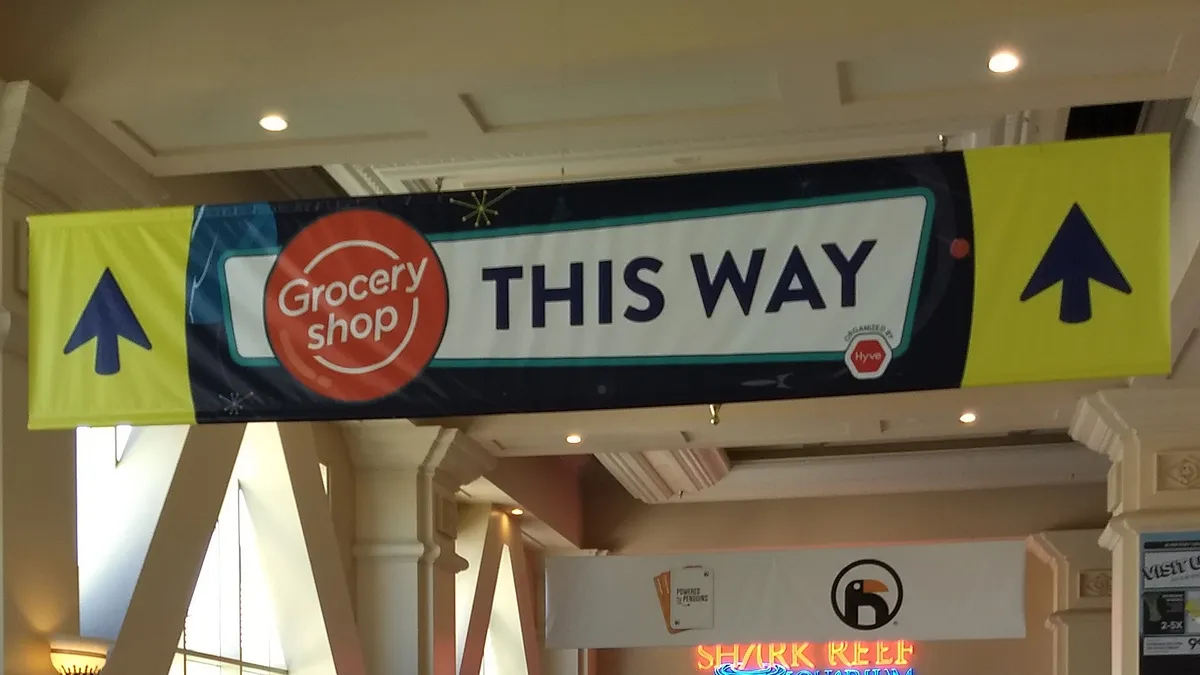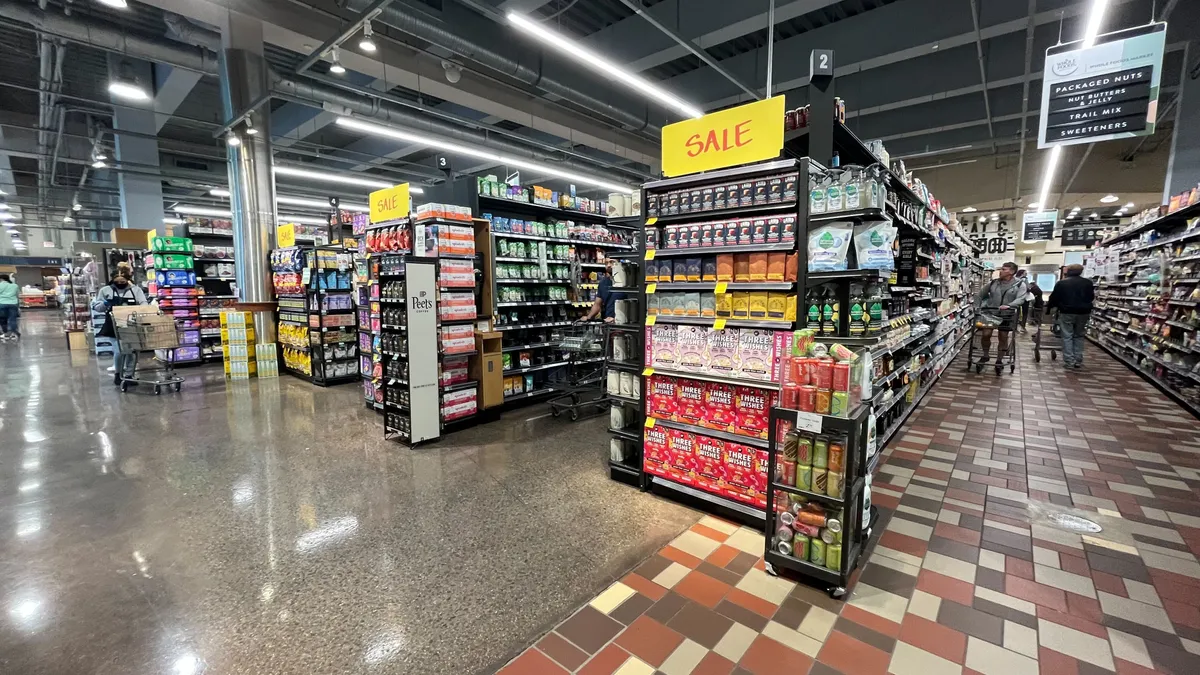Dive Brief:
- Lidl’s latest promotional flyer features a host of name brands ranging from Coca-Cola to Kettle Chips — a significant promotional shift for a company whose assortment is 90% private label, according to retail consultant Bill Bishop, writing on LinkedIn. Name brands dominate the circular’s food and personal care selections, and feature “buy one, get one 50% off” deals on several items, including Hellmann’s mayonnaise and Knorr rice packets.
- Bishop wrote that the promotions should increase customer traffic, which is something Lidl has struggled with in the ten months since it opened its first U.S. store. “Lidl does a lot of things well, but at this point, it also needs to do something different to get shoppers to try its stores and experience those benefits.”
- In an interview with Food Dive, Lidl communications manager Will Harwood said the company’s circulars won’t necessarily be name-brand focused going forward, citing the rotational nature of its promotions. “I wouldn’t put this into a bigger context,” he said, adding that national brands have always been a key part of Lidl's merchandising strategy.
Dive Insight:
Lidl burst onto the U.S. scene last summer promising to woo consumers with its lineup of private label products that delivered both market-beating prices and high quality. But things haven’t gone quite as planned: Store traffic has faltered, growth has slowed, and by many accounts the German discounter’s American landing has not gone as it planned.
In an interview with a German business publication earlier this year, Klaus Gehrig, CEO of the Schwarz Group, which oversees Lidl, referred to the company’s U.S. entry as “a mistake,” citing poor real estate selections, costly builds and a product assortment that missed the mark.
With its one-year anniversary in the U.S. approaching, Lidl clearly needs to make some changes. But should that include a shift towards familiar brands like Charmin and Hershey? This may go against the company’s core promise, but household brands do drive traffic to stores. According to marketing firm Catalina, center store sales are declining but still drive 81% of shopping trips.
Once it gets customers into stores, Lidl can drive trial of its private label products. These items are unfamiliar to most shoppers — a barrier that Lidl has struggled to overcome — but research suggests customers do come back after they’ve tried them. A survey from consulting firm Oliver Wyman found that 56% of consumers who had shopped Lidl said they would do so more often, compared to 39% who said so before stepping foot inside a store.
Whole Foods, whose name has become synonymous with natural and organic products, may be shifting towards mainstream brands, as well — albeit contentiously. Yahoo Finance reported last month that the grocer and new owner Amazon have locked horns over whether to stock name brands like Coca-Cola that don’t meet Whole Foods’ all-natural standards, but that could drive more mainstream consumers to stores.
Lidl has made other adjustments to drive more customers to its stores. It’s changing up its real estate strategy to include more small stores similar in size to its European stores at around 21,000 square feet. Its real estate team is also looking at leasing stores and not just buying them. Harwood emphasized that these locations will allow the chain to penetrate more urban markets where high-value customers reside but where space is at a premium.
“The whole idea is to give [the real estate team] more tools to increase penetration,” he told Food Dive.
As it pares down store size and addresses assortment, Lidl should also address its over-reliance on nonfood products ranging from garden hoses to dresses, observers note. These items have been a hit in Europe, and Lidl sees weekly discounts — or “surprises” — as a traffic driver. But it seems U.S. consumers haven’t quite known what to make of the odd assortment.
In a recent interview with Food Dive, Neil Stern, senior director with McMillanDoolittle made that point that the U.S. already has Costco and a wide range of nonfood retailers.
Lidl has made a number of mistakes, but they all seem to point back to one major error: It underestimated U.S. competition. In the lead-up to its arrival in America, grocers up and down the East Coast battened down the hatches, slashing prices and promoting value across their marketing outlets. Food Lion, which was expected to be easy prey for Lidl, has remodeled its stores and shown to be very resilient.
Harwood emphasized Lidl’s agility, and the importance it places on listening to customers. If it make effective changes, this first year in the U.S. could eventually be seen as an adjustment period rather than the beginning of a failed run.










